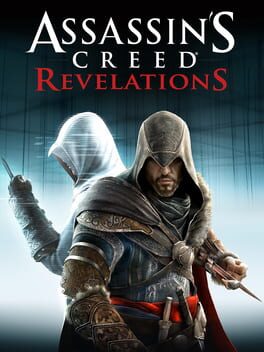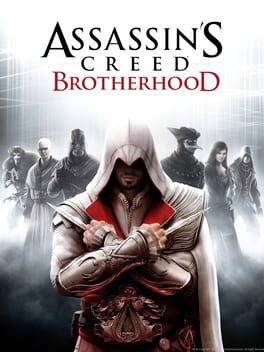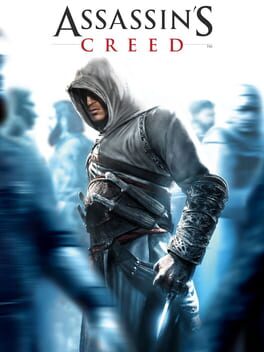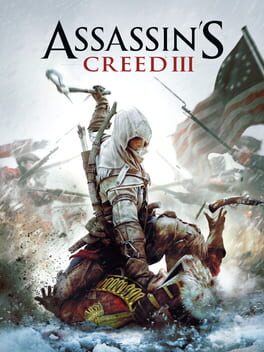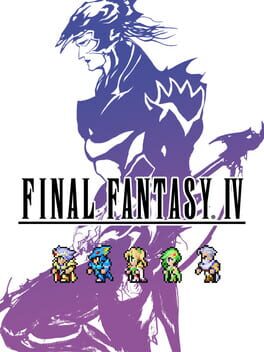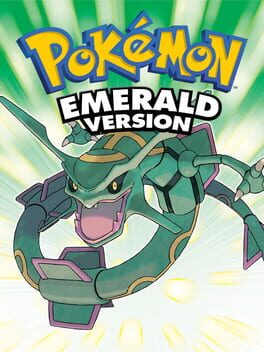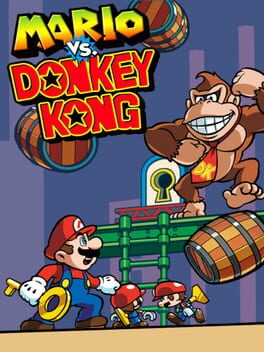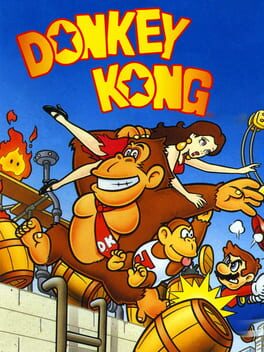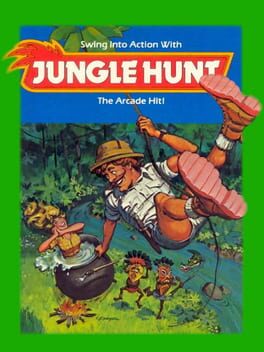ArcaneCrystal
This is the hardest that Assassin's Creed has ever chased Uncharted. Tombs are now main quests, reflecting Ezio's characterization as a scholar-adventurer who loves finding rare books that lead him to keys that unlock a library, who writes letters detailing his activities to his sister, and who falls in love with a bookseller. Missions tend to be tightly scripted setpieces, with lots of fixed camera angles and action-packed cutscenes.
Assassination and brotherhood management, an activity Ezio grows increasingly weary of, is mostly side activity that seems to inconveniently intrude upon his quest for knowledge. But at least provides opportunities to use the ridiculously bloated toolset that the main missions rarely call for.
Constantinople is one of the best cities in a series, and the new hookblade moves make it a joy to move across. They even seemed to have tuned up the returning moveset, because I encountered way fewer control issues during fast-paced chases than I did in AC2 and Brotherhood.
I really love Desmond's first person puzzle platformer with walking sim narration. The character writing in this game is excellent, and the three storylines always have satisfying thematic echoes of each other. Desmond needs to learn the difference between himself, Ezio, and Altair, but you can see why he got confused in the first place: they all deal with similar problems in their lives.
It's a very somber, contemplative story that is a great setup for the tone of AC3... when Desmond arrives at The Revelation, he doesn't even learn anything new. The struggles of all three heroes just led to another redundant backup message. It's not uncovering secret knowledge that brings these men peace, but understanding each other. Desmond looked to Subject 16 as a guy who knew all the answers, but he too is just a guy. All Clay really wants is a conversation about something real and mundane.
Assassination and brotherhood management, an activity Ezio grows increasingly weary of, is mostly side activity that seems to inconveniently intrude upon his quest for knowledge. But at least provides opportunities to use the ridiculously bloated toolset that the main missions rarely call for.
Constantinople is one of the best cities in a series, and the new hookblade moves make it a joy to move across. They even seemed to have tuned up the returning moveset, because I encountered way fewer control issues during fast-paced chases than I did in AC2 and Brotherhood.
I really love Desmond's first person puzzle platformer with walking sim narration. The character writing in this game is excellent, and the three storylines always have satisfying thematic echoes of each other. Desmond needs to learn the difference between himself, Ezio, and Altair, but you can see why he got confused in the first place: they all deal with similar problems in their lives.
It's a very somber, contemplative story that is a great setup for the tone of AC3... when Desmond arrives at The Revelation, he doesn't even learn anything new. The struggles of all three heroes just led to another redundant backup message. It's not uncovering secret knowledge that brings these men peace, but understanding each other. Desmond looked to Subject 16 as a guy who knew all the answers, but he too is just a guy. All Clay really wants is a conversation about something real and mundane.
The Ubisoft open-world formula is calcified here. The charismatic sicko villain has taken over the region as illustrated in a big opening setpiece, and it's on you to liberate zones by clearing forts while collecting resources for upgrades. This one also has a strong economic focus, with Ezio able to purchase every building in Rome like it's Fable II.
As the first major outing for this style of design, Brotherhood actually does pretty well. There's a good variation in quest design, with Leonardo machine missions, flashback missions, faction missions, and vr challenges spicing up the returning tombs, assassination contracts, and glyph puzzles. I do think it's funny that there's a special higher-budget category for assassinating multiplayer characters.
All the new abilities are a massive improvement on AC2's kit. Activate subweapons by holding attack, speed up combat by stringing combos, do horse flips and horse-to-horse assassinations, throw spears, have no fewer than five ranged options, glide across the city in a parachute.
The recruit system in particular is so simple but also so perfectly tuned. It really never gets old to press one button and have a recruit appear from a hiding spot 0.5 seconds later to kill a guy. What unfortunately hasn't improved is the movement controls, which inevitably buckle in any high-pace situation.
One advantage of the game's structure is that because all the game's side activities feed into Liberating Roma, the main quest and side content feel cohesive in a way a lot of open worlds don't. Despite being a bloated Ubisoft open world, Brotherhood actually has a strong sense of focus to it: the Assassins are coming together to ruin Cesare Borgia's day.
After the disorganized brotherhood of AC2, it's nice to see this game's focus on the mundane organizational problems that occur among the leadership clique of a growing organization. Rivalries, suspicion, resentment, disappointment, strategic disagreements, romantic tension, cheesy reconciliations. It's low-energy, but kind of works as a workplace drama, which is also the genre of much of Desmond's storyline.
Maybe the most well-done narrative element is the subplot that Ezio is a 40 year old man who is getting tired of casual sex and would really like to settle down with someone like Caterina Sforza, but she's not into it. He's always seeing women in the streets that remind him of Cristina Vespucci, the one that got away. It's surprisingly tender for a series that rarely trades in subtlety.
The multiplayer component is sadly no longer online, but it was extremely cool in 2010. Multiplayer would be worth five stars on its own.
As the first major outing for this style of design, Brotherhood actually does pretty well. There's a good variation in quest design, with Leonardo machine missions, flashback missions, faction missions, and vr challenges spicing up the returning tombs, assassination contracts, and glyph puzzles. I do think it's funny that there's a special higher-budget category for assassinating multiplayer characters.
All the new abilities are a massive improvement on AC2's kit. Activate subweapons by holding attack, speed up combat by stringing combos, do horse flips and horse-to-horse assassinations, throw spears, have no fewer than five ranged options, glide across the city in a parachute.
The recruit system in particular is so simple but also so perfectly tuned. It really never gets old to press one button and have a recruit appear from a hiding spot 0.5 seconds later to kill a guy. What unfortunately hasn't improved is the movement controls, which inevitably buckle in any high-pace situation.
One advantage of the game's structure is that because all the game's side activities feed into Liberating Roma, the main quest and side content feel cohesive in a way a lot of open worlds don't. Despite being a bloated Ubisoft open world, Brotherhood actually has a strong sense of focus to it: the Assassins are coming together to ruin Cesare Borgia's day.
After the disorganized brotherhood of AC2, it's nice to see this game's focus on the mundane organizational problems that occur among the leadership clique of a growing organization. Rivalries, suspicion, resentment, disappointment, strategic disagreements, romantic tension, cheesy reconciliations. It's low-energy, but kind of works as a workplace drama, which is also the genre of much of Desmond's storyline.
Maybe the most well-done narrative element is the subplot that Ezio is a 40 year old man who is getting tired of casual sex and would really like to settle down with someone like Caterina Sforza, but she's not into it. He's always seeing women in the streets that remind him of Cristina Vespucci, the one that got away. It's surprisingly tender for a series that rarely trades in subtlety.
The multiplayer component is sadly no longer online, but it was extremely cool in 2010. Multiplayer would be worth five stars on its own.
2007
Desmond and Altair's stories dovetail really well to slowly reveal the philosophies of the assassins and templars, something that later games often skip over for a simpler good guys vs bad guys conflict. Desmond is a prisoner who must sneak around and scrounge for bits of information just like Altair, but he ran away from the responsibilities that Altair has to re-learn the meaning of.
The game design reflects Altair's perspective as a tool of a strange murder cult: he doesn't care about money or doing side quests that don't relate to or aid his primary mission. The crowd is just an organic mass of obstacles for him to carefully navigate around. Nuisance characters will challenge his patience, but the right decision is always to stay calm and keep hiding in plain sight. He needs to manually lock on to targets, demanding focused attention for each kill. Like Desmond, he is not exactly a free man, and always has to operate under bureaucratic approval.
The limited toolset encourages waiting for the right opportunity to move and strike, rather than clearing out every guard from a safe position. There is always a danger of getting caught if you get too greedy with high profile actions.
I love how slow and methodical climbing is, while still allowing for agile manual maneuvers in a pinch. Even the combat being all about waiting for counters kind of works with the game's focus on slow, patient observation, though unfortunately there is too much combat for that feeling to hold.
The real problem with this game is that it's already way way too much of a ubisoft open world game. 420 collectibles and 60 templars is an absurd number, but at least those are easy enough to ignore. But the map is littered with icons for too many viewpoints and too many save citizen missions, which are all just a combat sequence with the same dialogue. Not only is there icon spam but there's also audio spam, as you'll hear the same save citizen mission barks over and over, and they're so densely packed into each district that you can't miss them. The rewards are genuinely useful, but they're such a chore that I found myself ignoring them and accepting the constant barks. Honestly I'd rather clear chests in unity than do all the save citizen missions as I come across them, or check off all the viewpoints that are 30 feet away from each other.
Masyaf and Kingdom ended up being my favorite maps because they are so sparse and quiet and moody. I think the main cities would be way better if there was less content in them. I don't mind the repetitive structure of the investigations, because it fits with Altair needing to work within the system, and they always come with unique dialogue and helpful information. But the open world fluff just drags the game down so hard, which is such a shame because the atmosphere is truly unmatched in its best moments.
The game design reflects Altair's perspective as a tool of a strange murder cult: he doesn't care about money or doing side quests that don't relate to or aid his primary mission. The crowd is just an organic mass of obstacles for him to carefully navigate around. Nuisance characters will challenge his patience, but the right decision is always to stay calm and keep hiding in plain sight. He needs to manually lock on to targets, demanding focused attention for each kill. Like Desmond, he is not exactly a free man, and always has to operate under bureaucratic approval.
The limited toolset encourages waiting for the right opportunity to move and strike, rather than clearing out every guard from a safe position. There is always a danger of getting caught if you get too greedy with high profile actions.
I love how slow and methodical climbing is, while still allowing for agile manual maneuvers in a pinch. Even the combat being all about waiting for counters kind of works with the game's focus on slow, patient observation, though unfortunately there is too much combat for that feeling to hold.
The real problem with this game is that it's already way way too much of a ubisoft open world game. 420 collectibles and 60 templars is an absurd number, but at least those are easy enough to ignore. But the map is littered with icons for too many viewpoints and too many save citizen missions, which are all just a combat sequence with the same dialogue. Not only is there icon spam but there's also audio spam, as you'll hear the same save citizen mission barks over and over, and they're so densely packed into each district that you can't miss them. The rewards are genuinely useful, but they're such a chore that I found myself ignoring them and accepting the constant barks. Honestly I'd rather clear chests in unity than do all the save citizen missions as I come across them, or check off all the viewpoints that are 30 feet away from each other.
Masyaf and Kingdom ended up being my favorite maps because they are so sparse and quiet and moody. I think the main cities would be way better if there was less content in them. I don't mind the repetitive structure of the investigations, because it fits with Altair needing to work within the system, and they always come with unique dialogue and helpful information. But the open world fluff just drags the game down so hard, which is such a shame because the atmosphere is truly unmatched in its best moments.
Since AC2 these games have been about building your own economic empire, so AC4 wisely admits that you were playing a pirate all along, and makes the protagonist an appropriately greedy bastard. Of course Kenway would loot bodies, open random chests, get into a fight in every bar, take over forts, manage a fleet, and have a dedicated checklist button to make sure he doesn't miss a scrap of treasure.
Compared to AC3, the cities are less atmospheric and more functional. Fewer bespoke animations for NPCs and blending, ambient music replaces ambient noise and dialogue, and crowds move in big chunks like AC2. Again this fits with Kenway's character! He is not a guy who stops to smell the roses, He's rushing from one objective to the next to get rich as quickly as possible.
Social stealth is de-emphasized in favor of stalking through the bushes, which means there is always room to keep moving. Enemy detection is much more forgiving, encouraging aggressive hit and run tactics that fit the pirate theme, and work very well with the speed of AC3's combat and traversal. Avoiding detection in a boat involves always moving forward, just changing directions when you need to. Even in stealth, Kenway is always thinking on his feet.
And that's the biggest strength of AC4: the scenario is so well-integrated with the gameplay. The historical figures all have the same job as you, so they can actually be major parts of the story rather than cameo appearances. Kenway is an outsider to the Assassin-Templar war who drops in and out of it at his convenience, just as the player can always choose when to start the next main mission, free of the obligations that bound Altair and Desmond. You don't have to pretend to serve the Creed anymore. Welcome to the Republic of Pirates.
Compared to AC3, the cities are less atmospheric and more functional. Fewer bespoke animations for NPCs and blending, ambient music replaces ambient noise and dialogue, and crowds move in big chunks like AC2. Again this fits with Kenway's character! He is not a guy who stops to smell the roses, He's rushing from one objective to the next to get rich as quickly as possible.
Social stealth is de-emphasized in favor of stalking through the bushes, which means there is always room to keep moving. Enemy detection is much more forgiving, encouraging aggressive hit and run tactics that fit the pirate theme, and work very well with the speed of AC3's combat and traversal. Avoiding detection in a boat involves always moving forward, just changing directions when you need to. Even in stealth, Kenway is always thinking on his feet.
And that's the biggest strength of AC4: the scenario is so well-integrated with the gameplay. The historical figures all have the same job as you, so they can actually be major parts of the story rather than cameo appearances. Kenway is an outsider to the Assassin-Templar war who drops in and out of it at his convenience, just as the player can always choose when to start the next main mission, free of the obligations that bound Altair and Desmond. You don't have to pretend to serve the Creed anymore. Welcome to the Republic of Pirates.
2012
this may be the most directionless spaghetti-on-the-wall game in the series. an unnecessarily complex trading and crafting system with the clunkiest ui ever devised. taking over forts lowers the tax rate, just in case connor needed to be motivated by bourgeois concerns too. an annoying lockpicking minigame. an underground maze game to unlock fast travel. a bunch of surprisingly challenging minigames. the boat!
the story is somehow even more of a patchwork mess than ac2. once again there are a bunch of awkward time jumps where character development seems to happen offscreen, most notably in sequence 9 where connor suddenly reveres washington and the ideals of the revolution, rather than incidentally crossing paths because the templars are involved. connor has six different motivations and juggles them from scene to scene. the haytham conflict doesn't work because they just talk past each other. daniel cross is wasted. desmond's ending is an awkward comprimise clearly borne out of internal arguments at ubisoft.
mission design is generally highly scripted, and the ui really pushes constraints such that they feel less like bonus objectives and more like stage directions that would be embarassing to fail. this generally works when it encourages slow careful play, but is annoying when it demands getting a certain amount of a certain type of kill. mission design tends to get worse as the game goes on, and the final sequence is just wretched. the captain kidd missions are dollar bin uncharted.
despite all this, the game really won me over! for one, the environments are detailed and beautiful. there are lots of cool little bespoke animations for connor and npcs (my favorite is npcs holding doors open for you). crowds are more varied, and blending is more organic. dangerous rooftops in cities encourage navigating crowds, while dangerous ground in the frontier encourages treerunning.
the weather system is cool. connor and haytham are both incredible character designs. a lot of sound effects and voice lines are strangely compressed, but overall there is a great audio atmosphere that makes up for the lack of ambient music. i loooove the boat, it's a relatively simple game of positioning and timing that explodes with the sound of waves and cannon fire and screaming.
in general i would say ac3 has fantastic base mechanics. the parkour is the best in the series, the routes are easy to read and allow for smooth horizontal and vertical movement at speed, without sacrificing the ability to do slow precise movement. the little sidestep you can do on the ground maked it much easier to navigate around corners and crowds. treerunning showcases the strengths of the system, with the modular trees making it easy to trace a path without looking too inorganic.
combat dispenses with the idea that ac is about anything other than an animation showcase for counters, and lets you build fast killstreaks with the combo system. if assassin's creed is to be a game about chases and arena fights, you can't get better than the ac3 model.
these mechanics are often let down by the main mission design, with the best missions being eavesdrops and tails that let you enjoy the atmosphere and animations. the paul revere mission also really works as a game about navigating around patrols. crouching in the bushes is balanced well with good old fashioned social stealth and observing guard movements.
but the side content is where the game really shines. hunting requires patience and careful positioning, making for better "assassination" missions than the actual contracts. almanac pages also require a more carefully planned approach than most collectibles. investigating tall tales in the frontier adds a lot of texture to the world. the boat is just awesome and it's no wonder they started building a whole game around it a year before ac3 came out.
and the homestead! the homestead is where the story is truly unlocked. connor often comes off as stubbornly naive in the main story, but it all made sense once i did the homestead. he is living in an idealized schoolhouse rock vision of american colonialism, so of course he believes in the patriots. suddenly he acquires a paladin swag: he is a guy who truly believes in something and refuses to be beaten down no matter what. it's a good flavor to mix with the mostly fatalistic tone of the main story and desmond's story, which was carried over from revelations. all the striving of men may be little more than theatre in the incomprehensible machinations of the gods, but connor is going to get a baby delivered and a wedding organized.
the story is somehow even more of a patchwork mess than ac2. once again there are a bunch of awkward time jumps where character development seems to happen offscreen, most notably in sequence 9 where connor suddenly reveres washington and the ideals of the revolution, rather than incidentally crossing paths because the templars are involved. connor has six different motivations and juggles them from scene to scene. the haytham conflict doesn't work because they just talk past each other. daniel cross is wasted. desmond's ending is an awkward comprimise clearly borne out of internal arguments at ubisoft.
mission design is generally highly scripted, and the ui really pushes constraints such that they feel less like bonus objectives and more like stage directions that would be embarassing to fail. this generally works when it encourages slow careful play, but is annoying when it demands getting a certain amount of a certain type of kill. mission design tends to get worse as the game goes on, and the final sequence is just wretched. the captain kidd missions are dollar bin uncharted.
despite all this, the game really won me over! for one, the environments are detailed and beautiful. there are lots of cool little bespoke animations for connor and npcs (my favorite is npcs holding doors open for you). crowds are more varied, and blending is more organic. dangerous rooftops in cities encourage navigating crowds, while dangerous ground in the frontier encourages treerunning.
the weather system is cool. connor and haytham are both incredible character designs. a lot of sound effects and voice lines are strangely compressed, but overall there is a great audio atmosphere that makes up for the lack of ambient music. i loooove the boat, it's a relatively simple game of positioning and timing that explodes with the sound of waves and cannon fire and screaming.
in general i would say ac3 has fantastic base mechanics. the parkour is the best in the series, the routes are easy to read and allow for smooth horizontal and vertical movement at speed, without sacrificing the ability to do slow precise movement. the little sidestep you can do on the ground maked it much easier to navigate around corners and crowds. treerunning showcases the strengths of the system, with the modular trees making it easy to trace a path without looking too inorganic.
combat dispenses with the idea that ac is about anything other than an animation showcase for counters, and lets you build fast killstreaks with the combo system. if assassin's creed is to be a game about chases and arena fights, you can't get better than the ac3 model.
these mechanics are often let down by the main mission design, with the best missions being eavesdrops and tails that let you enjoy the atmosphere and animations. the paul revere mission also really works as a game about navigating around patrols. crouching in the bushes is balanced well with good old fashioned social stealth and observing guard movements.
but the side content is where the game really shines. hunting requires patience and careful positioning, making for better "assassination" missions than the actual contracts. almanac pages also require a more carefully planned approach than most collectibles. investigating tall tales in the frontier adds a lot of texture to the world. the boat is just awesome and it's no wonder they started building a whole game around it a year before ac3 came out.
and the homestead! the homestead is where the story is truly unlocked. connor often comes off as stubbornly naive in the main story, but it all made sense once i did the homestead. he is living in an idealized schoolhouse rock vision of american colonialism, so of course he believes in the patriots. suddenly he acquires a paladin swag: he is a guy who truly believes in something and refuses to be beaten down no matter what. it's a good flavor to mix with the mostly fatalistic tone of the main story and desmond's story, which was carried over from revelations. all the striving of men may be little more than theatre in the incomprehensible machinations of the gods, but connor is going to get a baby delivered and a wedding organized.
every time i play an npckc game i think "that was fine but i wish it had more rough edges." resources slowly become more difficult to manage, but the game ends before you're stuck in a real quagmire. diagnosis is liberation from the management sim, rather than just another factor. the protagonist is soft-spoken even in private to a degree i find difficult to relate to, like the game is scared of them feeling unsympathetic for even a moment.
2021
a milestone in puppet theatre with a bunch of cool narrative design flourishes. the battle screen is just another stage for storytelling, and i know that tellah is a knowledgeable but frail old man because he knows all the spells but only has 90mp. unfortunately, while the storytelling is quite good, the story itself is not. the pacing is too brisk for its own good, characters sprint from beat to beat with few moments to breathe, and any tragedy or conflict is quickly defused and forgotten.
i initially had a lot of trouble adjusting to atb, partially due to the early game giving you weak and fiddly characters for narrative reasons. i slowly learned to appreciate the value of a well-organized inventory that's easy to navigate under pressure and the pleasure of recovering from suboptimal decisions. but in the second half when the party is more stable, i realized that most enemies don't require much moment-to-moment tactical adjustments, you can just learn their pattern and set an appropriate autobattle loop. combined with the game's linearity and set party composition, ff4 really feels like a precursor to ff13, which is a game that i love. at the very least it does the concept of "trick fights" a lot more elegantly than ff3, and the dungeons are well-designed to drain your resources between checkpoints.
i totally understand why the smooth fusion of narrative and gameplay makes this an all-time classic for many people. it makes me feel like an actor in a play, but that just means the weak script drags it down harder.
i initially had a lot of trouble adjusting to atb, partially due to the early game giving you weak and fiddly characters for narrative reasons. i slowly learned to appreciate the value of a well-organized inventory that's easy to navigate under pressure and the pleasure of recovering from suboptimal decisions. but in the second half when the party is more stable, i realized that most enemies don't require much moment-to-moment tactical adjustments, you can just learn their pattern and set an appropriate autobattle loop. combined with the game's linearity and set party composition, ff4 really feels like a precursor to ff13, which is a game that i love. at the very least it does the concept of "trick fights" a lot more elegantly than ff3, and the dungeons are well-designed to drain your resources between checkpoints.
i totally understand why the smooth fusion of narrative and gameplay makes this an all-time classic for many people. it makes me feel like an actor in a play, but that just means the weak script drags it down harder.
the short length and nonlinear structure of this game make it perfectly suited to short handheld sessions. as someone who has played world 1 of mario way more than the rest of the game, mario land 2 feels like getting six different versions of world 1, each with a creative visual theme that is unique for the series. of course, the tradeoff of this structure is that the game can't really build complexity over time, the difficulty curve is flat and there's no truly great levels, just a bunch of pretty good ones.
1992
a cute example of the "cinematic puzzle platformer", where the solutions are always within reach so you just smoothly progress through the scenario, similar to playdead's games. the only thing bringing down the pacing is that noobow is too slow... i love seeing the lil guy walk but you gotta speed up a bit buddy
the focus on land and sea really pays off in the route design in this game, with tons of diverse and beautiful environments. the soot-covered plain, the rainy river valley with tall grass, the blistering desert, deep trenches beneath the sea. colors are so vibrant and the way sprites are drawn with big chunks of color makes the game look like a cartoon. there's many cool "next-gen" effects like footsteps in the sand, reflections and shadows in the water, and logs that buckle under your feet.
so, great audio, great visuals, great new set of monsters. double battles are much more interesting than single battles, although contests are more interesting than both. the battle frontier is where most of the challenge in battles appears. dungeons tend to be short and simple, though there are a few good puzzles in gyms. the legendary pokemon storyline doesn't do much to mix up the same old structure of pokemon league and enemy team. 8 HMs is too damn many HMs.
as much as i love the aesthetics of this game, it's easy to see why this is the point where a lot of original fans fell off. a lot of the interesting rough edges of the prior games have been sanded off, and yet the grindiness has somehow increased. this game is constantly throwing new time sinks at you just in case catching them all wasn't enough. it leaves the main quest feeling a little underbaked, because i'm supposed to get sucked into the postgame world of planting berries and making pokeblocks and rebattling trainers and breeding pokemon and winning battle points. i beat the elite four with only four real pokemon and an HM mule, because raising a full team of six would have been too tedious.
so, great audio, great visuals, great new set of monsters. double battles are much more interesting than single battles, although contests are more interesting than both. the battle frontier is where most of the challenge in battles appears. dungeons tend to be short and simple, though there are a few good puzzles in gyms. the legendary pokemon storyline doesn't do much to mix up the same old structure of pokemon league and enemy team. 8 HMs is too damn many HMs.
as much as i love the aesthetics of this game, it's easy to see why this is the point where a lot of original fans fell off. a lot of the interesting rough edges of the prior games have been sanded off, and yet the grindiness has somehow increased. this game is constantly throwing new time sinks at you just in case catching them all wasn't enough. it leaves the main quest feeling a little underbaked, because i'm supposed to get sucked into the postgame world of planting berries and making pokeblocks and rebattling trainers and breeding pokemon and winning battle points. i beat the elite four with only four real pokemon and an HM mule, because raising a full team of six would have been too tedious.
1996
it's no surprise that pokemon was an instant classic, this game is brimming with creativity. cool semi-real setting, cool sports storyline, cool monster sprites. very much a descendant of saga, from limited movesets, limited use of moves, learning new moves on level up, recruiting monster species to your party, an unorthodox opaque leveling system in EVs, and even the style of the little monster sprites in the menu.
the biggest problem with this of course is that the rpg mechanics are stretched pretty thin over 25 hours. i like the way that types are roughly analogous to classic rpg classes, rather than how later games try to balance the types. but a lot of the game is mindless fights against easy enemies. PP makes the dungeons more about resource management, and the dungeons do have clever layouts that keep them interesting to navigate despite endless zubat fights. i think that the game is not too grindy just sticking to the main story, but it takes too long to bring new underleveled pokemon up to speed, and it takes too long for pokemon to learn new moves. type advantage completely overwhelms all other mechanics, so there's not much reason to engage in buffs or debuffs over just hitting them with a super effective attack. this can be mitigated by staying a bit underleveled, coming to the elite four like that made it a genuinely interesting challenge. these problems would be easier to forgive in a lean 10 hour game, but at least pokemon red provides a great canvas for romhacks.
the biggest problem with this of course is that the rpg mechanics are stretched pretty thin over 25 hours. i like the way that types are roughly analogous to classic rpg classes, rather than how later games try to balance the types. but a lot of the game is mindless fights against easy enemies. PP makes the dungeons more about resource management, and the dungeons do have clever layouts that keep them interesting to navigate despite endless zubat fights. i think that the game is not too grindy just sticking to the main story, but it takes too long to bring new underleveled pokemon up to speed, and it takes too long for pokemon to learn new moves. type advantage completely overwhelms all other mechanics, so there's not much reason to engage in buffs or debuffs over just hitting them with a super effective attack. this can be mitigated by staying a bit underleveled, coming to the elite four like that made it a genuinely interesting challenge. these problems would be easier to forgive in a lean 10 hour game, but at least pokemon red provides a great canvas for romhacks.
the first problem with this game is that it's hideous to look at. the second problem is that the sound effects are grating. the third problem is that the level design is bland and obvious. the aesthetic problems could be forgiven if the gameplay was better, and the rote levels could be forgiven if it was aesthetically pleasing, but instead i'm left with a game that isn't good at anything.
dk94 seemed to effortlessly string together interesting, challenging levels from world 1, and the challenge did not just come from completing bonus objectives. i almost dropped mario vs donkey kong after the first couple worlds, but i held on to the hope that maybe this is the kind of nintendo game that gets better in the back half. and... yeah, a little bit. not as much as i'd like. a lot of the easy levels get replaced with levels that are just tedious, or demand a precision of movement which the controls are ill-equipped for. i'd say maybe 20% of the levels do something interesting. i really wanted to like this because it's the sequel to one of my favorite games ever, but the more i tried to engage with it the more my disappointment grew.
dk94 seemed to effortlessly string together interesting, challenging levels from world 1, and the challenge did not just come from completing bonus objectives. i almost dropped mario vs donkey kong after the first couple worlds, but i held on to the hope that maybe this is the kind of nintendo game that gets better in the back half. and... yeah, a little bit. not as much as i'd like. a lot of the easy levels get replaced with levels that are just tedious, or demand a precision of movement which the controls are ill-equipped for. i'd say maybe 20% of the levels do something interesting. i really wanted to like this because it's the sequel to one of my favorite games ever, but the more i tried to engage with it the more my disappointment grew.
1994
the smartest thing about this game is how it varies the balance of puzzling and platforming. some levels make you think but have simple platforming, some levels have simple puzzles and more demanding platforming, some are classic donkey kong style action levels, and everything inbetween. it makes it so smooth to go through a sequence of levels, and on top of that they are constantly introducing new pieces to build levels with, and on top of that the platforming feels incredible, with a 2d mario 64 moveset 2 years before mario 64. the way that puzzles have multiple solutions also makes it fun to replay them. it reminds me a lot of the better breath of the wild shrines, right down to being able to do clever platforming that feels like breaking the level, even though it's all part of the design.
1986
this is a very visually impressive game! it's cool just to fly around, to go into hyperspace, to see small enemies in the distance become large, and to see them blow up into fireworks when you hit them.
i was really engaged with this at the beginning, but ultimately i just don't like the open world structure very much. it's too big and the shooting is not good enough to support the scope. funnily enough it's the same problem i have with a lot of modern games, where they make a strong first impression but then drag on so long that i can't help but focus on the frustrations.
i was really engaged with this at the beginning, but ultimately i just don't like the open world structure very much. it's too big and the shooting is not good enough to support the scope. funnily enough it's the same problem i have with a lot of modern games, where they make a strong first impression but then drag on so long that i can't help but focus on the frustrations.
1982
the swinging section is kind of the platonic ideal of an atari game: a simple action that's fun to do over and over. the combination of the jump speed and the parallax scrolling makes it feel thrilling every time, and i wouldn't mind playing a much longer section based on that.
however, the rest of the package is very uneven. the swimming section is well-animated but always goes on longer than i'd like it to. jumping over balls isn't bad, but the arc of the large ball really makes it seem like you should be able to walk under it, which as far as i can tell can't be done. the final boss just sucks in both concept and execution.
however, the rest of the package is very uneven. the swimming section is well-animated but always goes on longer than i'd like it to. jumping over balls isn't bad, but the arc of the large ball really makes it seem like you should be able to walk under it, which as far as i can tell can't be done. the final boss just sucks in both concept and execution.
